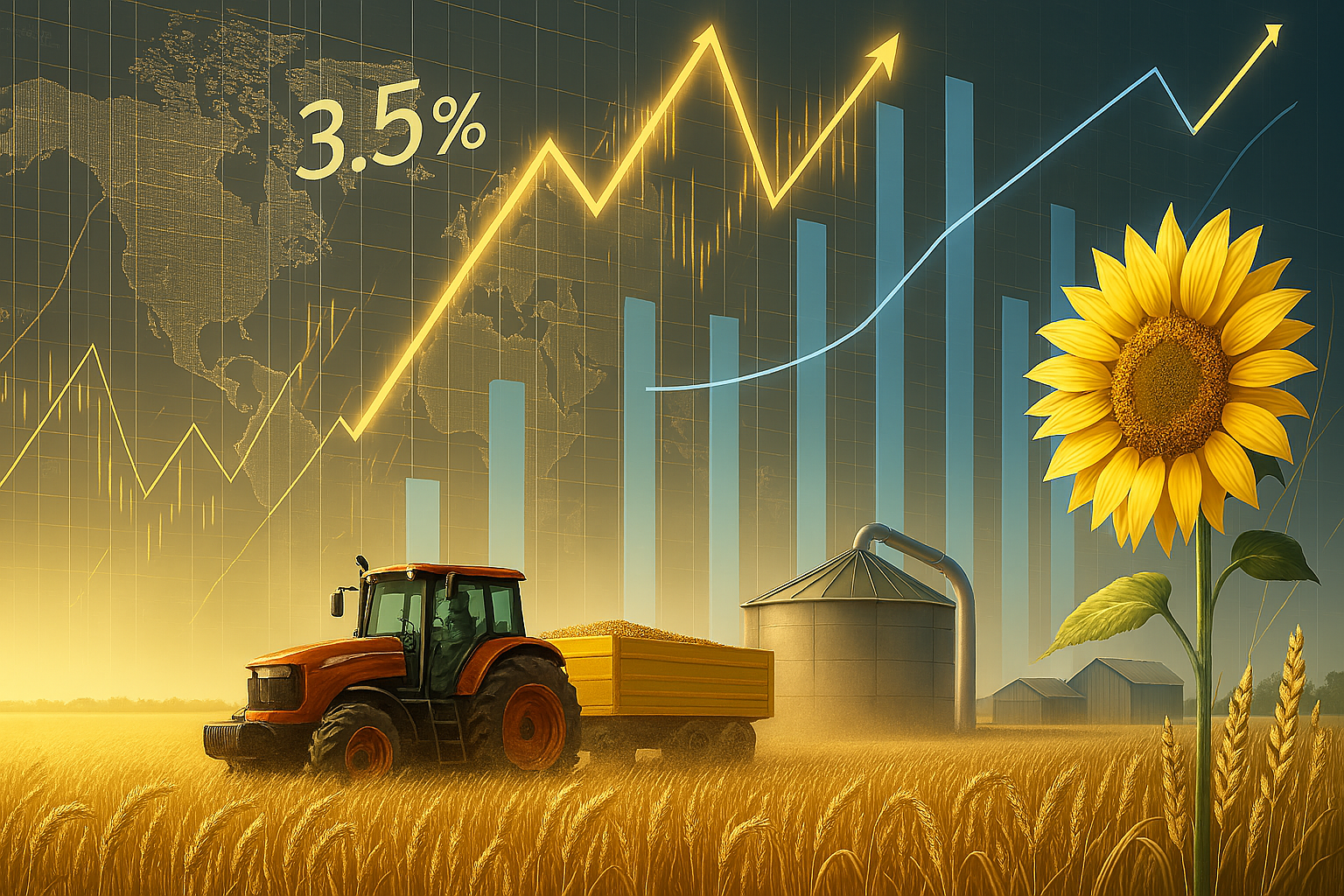Chicago grain markets opened the final trading session of the week on a quieter note after Thursday’s strong rally. Wheat futures for September 2025 began Friday at $5.18¼ per bushel, unchanged from the previous close. The market is stabilizing after a week of export-driven gains and modest increases in crop estimates from key global suppliers, including Russia and France. Despite bullish export sales—particularly hard red winter wheat—the broader picture remains cautious as long-term supply trends remain ample, and weather remains cooperative in much of Europe and North America.
Corn markets started Friday with modest weakness, with the September 2025 contract down 1 cent after closing Thursday at $3.84½ per bushel, up 4¾ cents. Export sales for new crop corn were especially strong, reaching 3.16 million metric tons—well beyond market expectations. Key buyers included Mexico, South Korea, and Guatemala. Supportive factors include positive ethanol data and a national average cash price rise. However, forecasts for higher U.S. yields and production could weigh on the market ahead of Tuesday’s USDA Crop Production report.
Soybeans also opened slightly lower, down 1½ cents Friday morning, following Thursday’s strong rebound. The September 2025 contract had closed at $9.74 per bushel, a gain of 8½ cents. Export activity continues to offer a cushion, with weekly sales hitting 467,842 MT for old crop and a marketing-year high of 545,010 MT for new crop. China remains notably absent from U.S. Q4 bookings, but their July import volumes hit a new record, largely due to Brazilian shipments. Rain forecasts across key U.S. Midwest states are supportive for crop development, which may limit further price increases in the short term.
Global market dynamics remain in flux as both supply and demand fundamentals evolve. Brazil’s soybean exports are projected at 8.15 million metric tons in August, slightly above last year’s pace, despite a slowdown in soymeal shipments. On the corn side, Brazil is expected to export 7.58 million tons, up significantly from last August. However, analysts are noting a deceleration in soybean area expansion for the 2025/26 season—potentially the slowest in two decades—raising longer-term supply concerns.
Argentina continues to support the bullish outlook for wheat. Wheat planting for the 2025/26 season is now complete, and the Buenos Aires Grain Exchange reports 99% of the crop in “normal to excellent” condition. Wheat area rose by 400,000 hectares compared to last year, and corn harvest is nearing completion with production estimates maintained at 49 million tons. With favorable crop conditions and expanded acreage, Argentina is poised to reinforce its export competitiveness.
In Russia, the IKAR consultancy raised its 2025 wheat crop estimate to 84.5 million tons and its export forecast to 41.5 million tons, citing strong yields in the central and Volga regions. Spring wheat harvest results are also exceeding expectations. Despite earlier drought in some southern regions, overall crop quality and output remain robust. This continued strength underlines Russia's dominant position in the global wheat market, especially in the absence of export restrictions.
The European market is experiencing mixed signals. France has raised its wheat harvest forecast to 33.07 million tons, up 29% from last year and 4% above the five-year average. However, French corn conditions are deteriorating due to early summer heat and intensifying water stress. The forecasted corn harvest is down 5.5% to 13.7 million tons. While these figures remain above historical averages, they reflect growing concerns about climate volatility and crop vulnerability across Europe.
Weather remains a key factor influencing the market. The U.S. Corn Belt is expected to experience warm and dry conditions into early September, raising yield concerns for both corn and soybeans during critical reproductive stages. Canada’s Prairie region is experiencing belated rainfall that comes too late for maturing crops, while Australia continues to benefit from consistent showers that support wheat and canola development. Meanwhile, central and northern China are expected to receive timely rainfall through the weekend, aiding crop development after prolonged heat and dryness.
Macroeconomic indicators are also playing a role. The UN FAO Food Price Index rose 1.6% in July, driven by sharp gains in vegetable oil and meat prices. Palm oil is becoming more expensive due to strong demand and tightening Black Sea sunflower oil supply, while meat prices hit record levels due to high cattle and sheep costs. Meanwhile, grain prices fell 0.8%, despite gains in specific markets like soybeans and wheat. These shifts highlight the uneven inflationary pressures across food commodities, which could influence grain trade flows and policy decisions in the months ahead.

